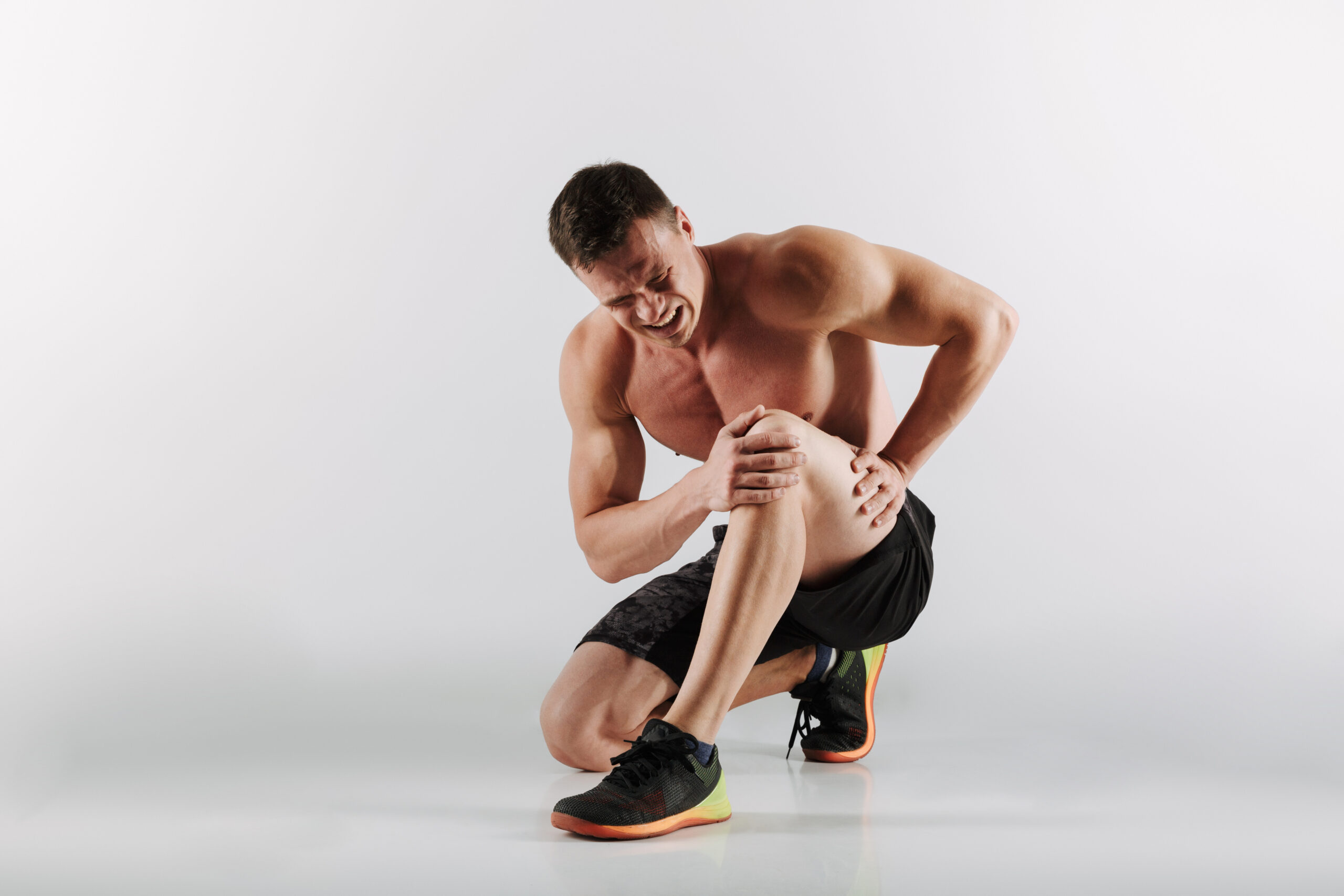A muscle strain is said to occur when the rupture of the muscle fibers covers less than 5% of their surface. A tear is defined as a situation when the tear covers more than 5% of muscle fibers, while rupture is the most severe type of damage to muscle tissue and means complete muscle disruption.
A muscle![]() is a contractile organ that forms an integral part of the locomotor system's functionality and structure. Muscles are evolutionary adaptations present in all vertebrates and higher invertebrates. Their specific functions predominantly determine the structure and form of muscles.
is a contractile organ that forms an integral part of the locomotor system's functionality and structure. Muscles are evolutionary adaptations present in all vertebrates and higher invertebrates. Their specific functions predominantly determine the structure and form of muscles.
In the human body, muscles are connected to the skeleton and operate through contraction and relaxation and initiating skeletal movement. Muscles require an appropriate fuel supply to ensure optimal functionality, which we can obtain from consumed food.

There are three degrees of this type of muscle damage:
As you can see, a muscle strain is the least severe injury among these. It differs from a tear only in the lower intensity of symptoms and a faster recovery period.
A muscle strain occurs due to overloading the muscle tissue or too sudden movement. Most often, this is the result of one or more of these causes![]() :
:
The symptoms of straining![]() are typical, but their intensity varies depending on the degree of damage. The ailments associated with a muscle strain include:
are typical, but their intensity varies depending on the degree of damage. The ailments associated with a muscle strain include:
In the event of a significant injury or persistent symptoms, seek medical attention for an accurate diagnosis and appropriate treatment plan.

The assessment and diagnosis of a muscle injury commence![]() with a comprehensive interview regarding the circumstances of the injury, followed by a clinical examination encompassing visual inspection, palpation of the muscles, and functional tests.
with a comprehensive interview regarding the circumstances of the injury, followed by a clinical examination encompassing visual inspection, palpation of the muscles, and functional tests.
In conjunction with the clinical examination, the specialist can do imaging tests. Ultrasonography is the foremost method for clinically diagnosing muscle injuries due to its cost-effectiveness; however, it is significant to note that the results of such an examination are contingent on the expertise of the ultrasound operator.
Additionally, magnetic resonance imaging (MRI) can accurately confirm or exclude the presence of a muscle injury and provide a detailed characterization of the lesion. In conclusion, a clinical diagnosis of muscle injury suffices in most cases, but ultrasound and MRI can be valuable tools if a more precise characterization of the injury is necessary.
Managing a muscle strain prompts uncertainty regarding the application of cold or heat therapy. The appropriate approach is contingent upon the timing of the injury. Immediate post-injury care involves the application of cold therapy to mitigate swelling. Subsequently, after a minimum of 24 hours post-injury, warm compresses can be beneficial as the tissue enters the regenerative phase.
The RICE method's![]() acronym stands for Rest, Ice, Compression, and Elevation. This principle is applied to minimize bleeding at the site of injury. While no clinical trial confirms its overall effectiveness, scientific evidence supports the individual components of this method.
acronym stands for Rest, Ice, Compression, and Elevation. This principle is applied to minimize bleeding at the site of injury. While no clinical trial confirms its overall effectiveness, scientific evidence supports the individual components of this method.
Resting the injured limb immediately after the injury prevents further damage to the torn muscle fragments and reduces the size of the hematoma and the resulting connective tissue scar. Early use of cryotherapy is associated with less hematoma, reduced inflammation, and accelerated recovery.
Compression, i.e., mechanical pressure on tissues after injury, reduces blood flow to the damaged area. Although its impact on the healing process is uncertain, a combination of cryotherapy and compression has been shown to reduce muscle temperature and blood flow. Elevation, i.e., raising the injured limb above the heart level, reduces intercellular fluid accumulation by decreasing hydrostatic pressure.
Some experts recommend avoiding painkillers and anti-inflammatory drugs![]() in the first 48 hours after an injury. The argument is that it may hurt tissue healing processes and increase the risk of bleeding. In the first two days after a muscle strain, some specialists may advise to take painkillers, but only if necessary.
in the first 48 hours after an injury. The argument is that it may hurt tissue healing processes and increase the risk of bleeding. In the first two days after a muscle strain, some specialists may advise to take painkillers, but only if necessary.
After the acute condition subsides, warming ointments![]() can be used; previously, the specialists recommended cooling gels
can be used; previously, the specialists recommended cooling gels![]() and heparin-containing gels. It avoids blood clots and accelerates the regeneration of the area. Horse chestnut preparations may also be helpful, as they improve the condition of blood vessels and help reduce bruising.
and heparin-containing gels. It avoids blood clots and accelerates the regeneration of the area. Horse chestnut preparations may also be helpful, as they improve the condition of blood vessels and help reduce bruising.
Kinesiotaping![]() is recommended for tendons or muscle strains as it alleviates pressure on pain receptors, enhances blood and lymph circulation, improves local metabolism, diminishes bruising, and offers passive support to the affected area.
is recommended for tendons or muscle strains as it alleviates pressure on pain receptors, enhances blood and lymph circulation, improves local metabolism, diminishes bruising, and offers passive support to the affected area.
In addition to kinesiotaping, massage![]() , and compression are beneficial for aiding in the recovery of a strained muscle and alleviating discomfort. Incorporating techniques such as stroking, rubbing, and other methods derived from classic massage promotes accelerated tissue regeneration. However, it's important to note that professional massage therapy administered by a skilled therapist is irreplaceable and offers the most effective treatment.
, and compression are beneficial for aiding in the recovery of a strained muscle and alleviating discomfort. Incorporating techniques such as stroking, rubbing, and other methods derived from classic massage promotes accelerated tissue regeneration. However, it's important to note that professional massage therapy administered by a skilled therapist is irreplaceable and offers the most effective treatment.

Another approach to addressing a muscle strain involves specific exercises such as foam rolling and stretching (as a part of rehabilitation). Furthermore, elevation of the injured limb above heart level for at least several minutes each day is crucial.
Home remedies for a muscle strain also encompass dietary considerations, such as incorporating turmeric and chili pepper. They have anti-inflammatory properties. Additionally, supplementing with vitamin D, particularly during autumn and winter, is advisable, as its deficiency may lead to myofascial pain and weaken the strength of these structures.
How long a stretched muscle hurts depends mainly on the speed of reaction to the injury and the strength of the muscle stretch. Therefore, it is important to immediately stop the activity and rest, apply cool compresses, and use medicinal preparations to alleviate muscle damage. However, three days are usually enough to recover from this type of injury.
If the initial phase of the injury has concluded without complications and the regeneration of the affected limb shows favorable progress, it is advisable to gradually initiate more active treatment of the injured muscle, ideally in collaboration with a physiotherapist.
The initial form of training conducted with a physiotherapist is isometric exercises. This term refers to a type of muscle contraction in which the length and tension of the muscle remain constant (e.g., plank). Exercises commence without added resistance, utilizing only the body weight. Upon mastering the exercises with proper technique, they can be intensified by incorporating additional resistance.
Once the patient can engage in isometric training without experiencing pain, isotonic exercises are introduced. Isotonic training involves movements where muscles undergo both shortening and lengthening. During the concentric phase, muscles contract with consistent tension; during the eccentric phase, they lengthen.
Commencing all rehabilitation activities with a thorough warm-up of the affected muscle is essential. Warmed muscles exhibit increased energy absorption compared to unheated muscles, enhancing their ability to withstand loads. When combined with stretching, warming improves muscle elasticity, reducing the risk of re-tearing. Stretching also serves to elongate the developing scar tissue at the injury site while it is still malleable.
To resume sports training, it is imperative to complete the whole rehabilitation process. The decision to return to training hinges on the ability to stretch the injured muscle to the same extent as the healthy muscle and the absence of pain. Nevertheless, a physiotherapist or personal trainer should oversee the initial stages of sports training.
Symptoms usually disappear within a few days. Sometimes, the effects can be felt for up to several weeks. It is important to take appropriate measures to prevent![]() these types of injuries. We are discussing a properly balanced diet rich in protein, which facilitates collagen formation and may indirectly affect muscle strength. It is essential to engage in physical activity systematically, and regular training improves the flexibility and strength of muscle fibers. It will minimize the risk of possible injury.
these types of injuries. We are discussing a properly balanced diet rich in protein, which facilitates collagen formation and may indirectly affect muscle strength. It is essential to engage in physical activity systematically, and regular training improves the flexibility and strength of muscle fibers. It will minimize the risk of possible injury.
It is also worth taking care of correctly selected footwear and other equipment necessary for our chosen activity. It will reduce the risk of possible injuries, such as muscle strain, sprain, or dislocation.